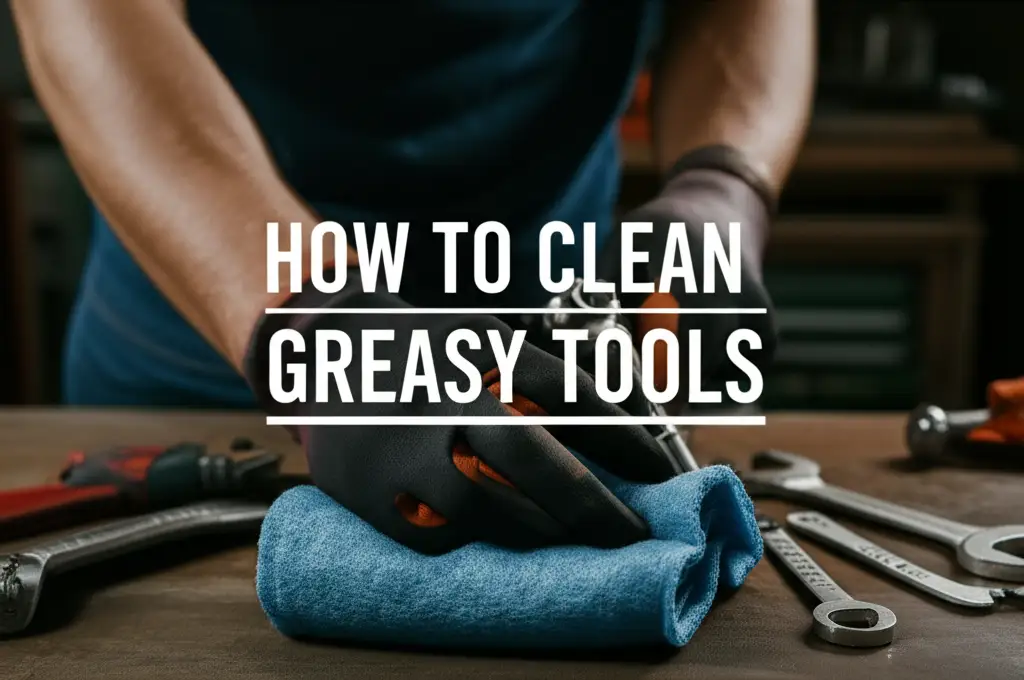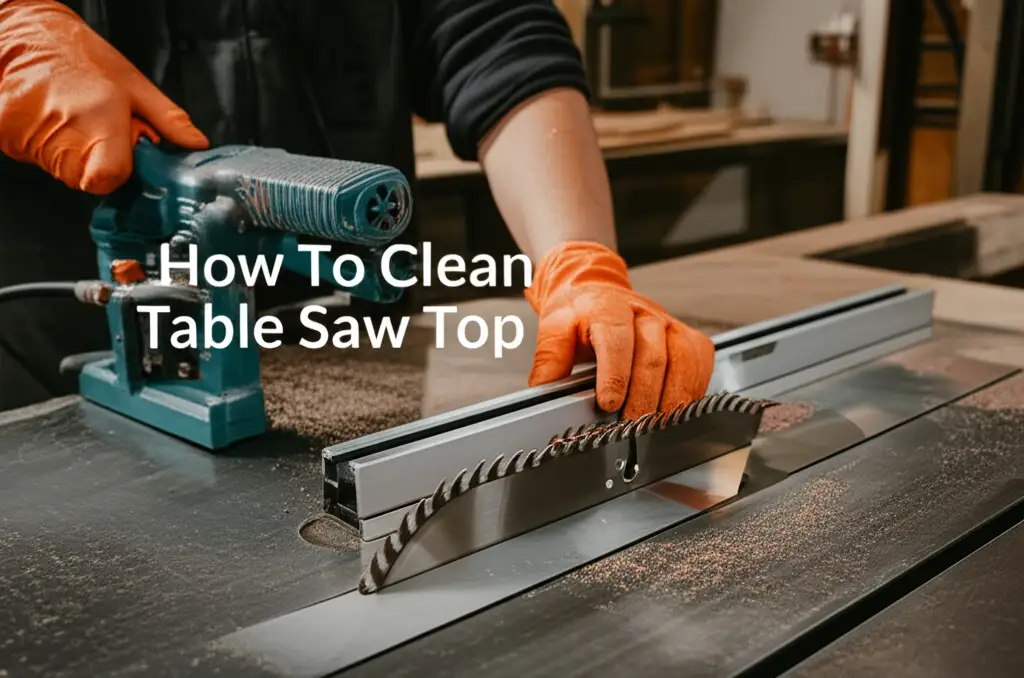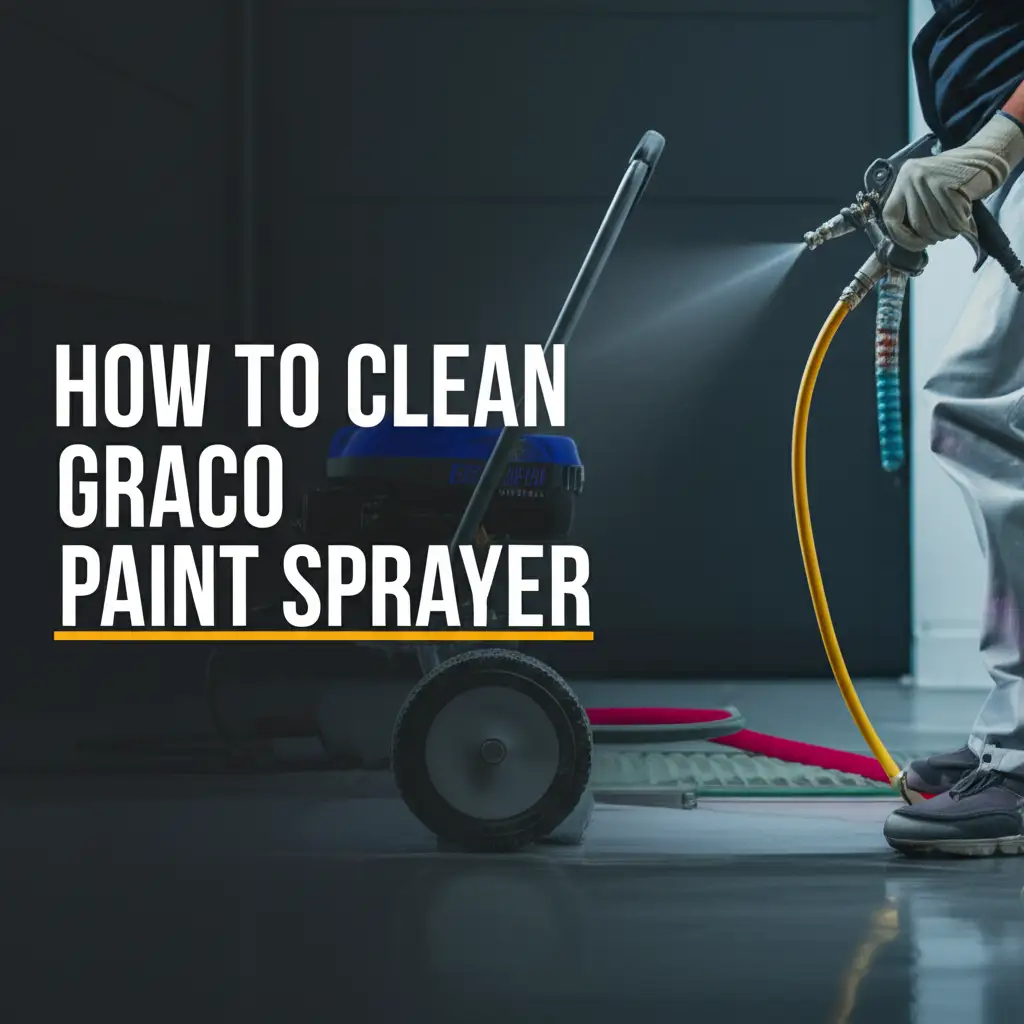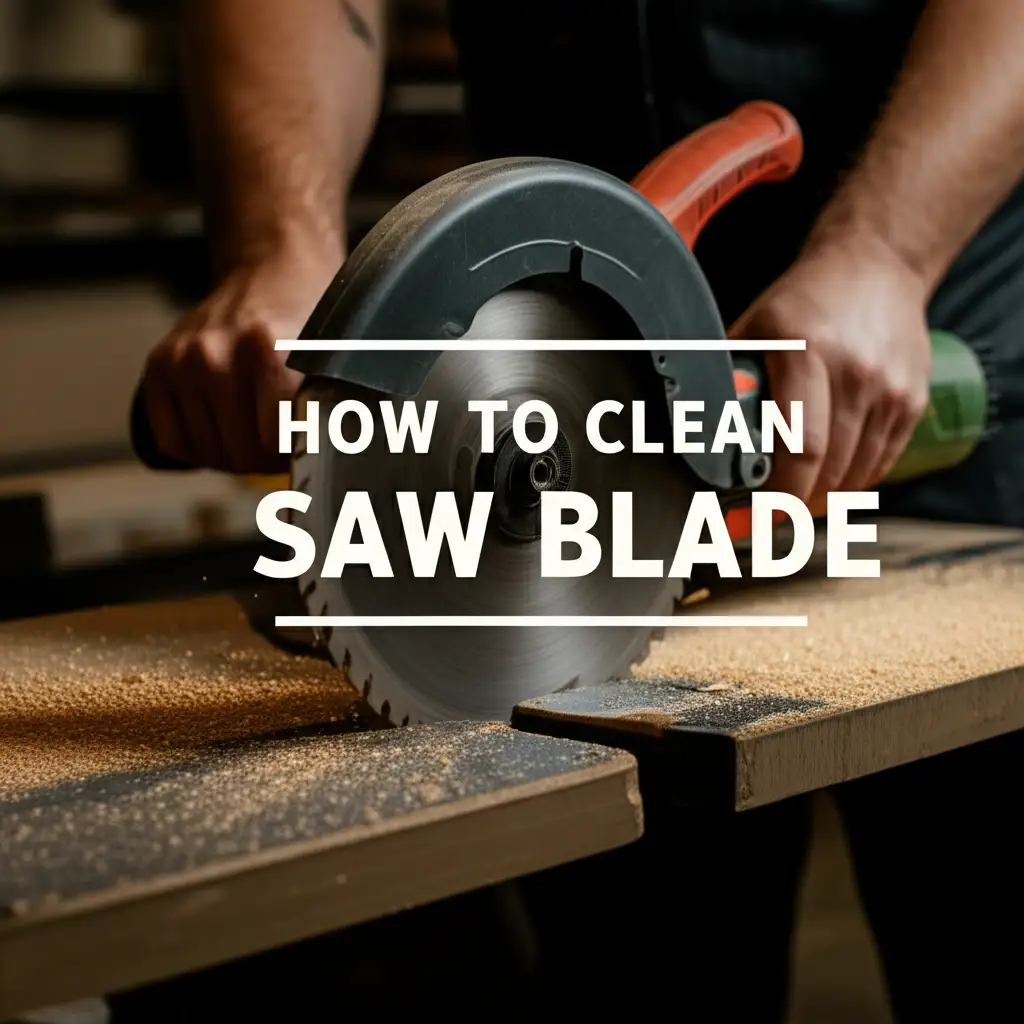· Tool Maintenance · 12 min read
How To Clean Bondo Off Tools
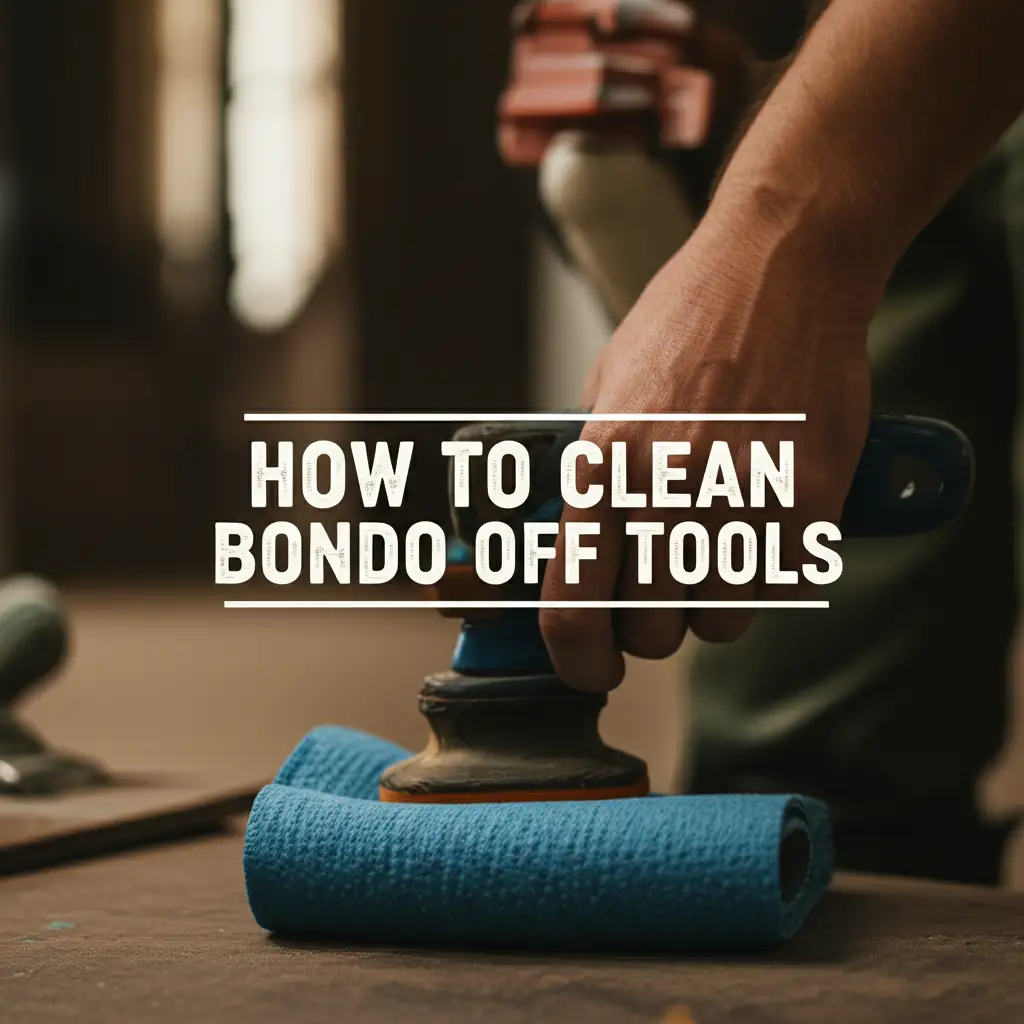
Restore Your Tools: How To Clean Bondo Off Tools Effectively
Bondo is a wonderful product for many repair jobs. It fills gaps, smooths surfaces, and helps restore damaged items. However, Bondo also sticks to everything, especially your tools. When Bondo dries on your spatulas, spreaders, or sanders, it becomes incredibly hard. Cleaning Bondo off tools quickly saves time and extends tool life. This guide will show you how to clean Bondo off tools, whether it is wet or fully hardened. We will cover methods, necessary materials, and important safety tips. Get ready to make your tools shine again.
Takeaway:
- Clean Bondo immediately while it is still wet for easiest removal.
- Use mechanical methods like scraping and brushing for hardened Bondo.
- Apply strong solvents like acetone or lacquer thinner for stubborn residue.
- Always wear proper safety gear, including gloves and eye protection.
- Prevent future buildup by cleaning tools right after each use.
When Bondo sticks to tools, it creates problems. You can remove Bondo from tools using simple mechanical scraping for wet material. For hardened Bondo, use strong solvents like acetone or lacquer thinner. Mechanical methods such as scraping and wire brushing also work well.
Understand Bondo: Why It Sticks To Tools
Bondo is a two-part body filler. It consists of a resin and a hardener. When you mix these two parts, a chemical reaction starts. This reaction causes the Bondo to harden very quickly. It becomes a solid, durable material.
This fast-hardening property is what makes Bondo so useful. It is also why Bondo sticks to tools so well. The resin component is very adhesive. It grabs onto surfaces, including metal, plastic, and wood. As it hardens, it forms a strong bond with your tools.
The speed of the hardening process means you have little time. If you do not clean your tools right away, the Bondo cures. Once cured, Bondo becomes much harder to remove. It acts like a very strong glue. Understanding this helps you clean your tools better. You know why immediate action is key.
Essential Tools and Materials For Bondo Removal
Cleaning Bondo off tools requires specific items. Having these ready makes the job easier and safer. First, gather your protective gear. Safety always comes first when dealing with chemicals and sharp tools.
You will need several types of cleaning tools. These help scrape and scrub the Bondo away. Solvents are crucial for dissolving hardened Bondo. Here is a list of what you should have on hand:
- Safety Glasses: Protect your eyes from flying debris or chemical splashes.
- Chemical-Resistant Gloves: Nitrile or rubber gloves protect your skin from solvents.
- Respirator or Face Mask: Wear this when using strong solvents or sanding Bondo. This protects your lungs from fumes and dust.
- Putty Knives and Scrapers: These are ideal for prying off Bondo. Choose various sizes and stiffnesses.
- Wire Brushes: Metal bristles help scrub away stubborn residue. They are good for textured surfaces on tools.
- Sandpaper or Sanding Blocks: Use coarse grits like 60 or 80 for rough removal. Finer grits can smooth tool surfaces.
- Acetone: A powerful solvent. It dissolves Bondo effectively.
- Lacquer Thinner: Another strong solvent. It works similarly to acetone.
- Mineral Spirits or Paint Thinner: Useful for general cleanup after using stronger solvents.
- Clean Rags or Shop Towels: For wiping down tools and applying solvents.
- Bucket or Container: For soaking smaller tools in solvent.
- Heat Gun (Optional): Can soften hardened Bondo. Use with extreme caution.
- Old Newspaper or Cardboard: Protect your work surface.
- Stiff Bristle Brush: Good for scrubbing tools.
Having these items prepared streamlines the cleaning process. It helps you tackle Bondo messes quickly and efficiently.
Methods For Cleaning Wet Bondo Off Tools
Cleaning Bondo while it is still wet is the easiest method. Time is crucial here. The moment you finish applying Bondo, clean your tools. Do not wait for it to start hardening. Wet Bondo is soft and pliable. It comes off with minimal effort.
First, use a clean putty knife or scraper. Scrape off as much excess Bondo as possible. Push the Bondo into a trash can or onto a piece of cardboard. Get off the big chunks. This step removes most of the material.
Next, wipe the tools with a clean rag. For plastic spreaders, often a simple wipe is enough. If Bondo remains, use a rag dampened with acetone or lacquer thinner. Wipe the tool until all Bondo residue is gone. Acetone evaporates quickly. It leaves tools clean. This quick action saves you from tough jobs later. Always dispose of Bondo waste properly.
How To Clean Hardened Bondo Off Tools
Hardened Bondo presents a bigger challenge. It is tough and stuck fast. You need a two-pronged approach. First, try mechanical methods. These involve scraping or brushing the Bondo off. Second, use chemical solvents. These help dissolve the stubborn residue.
Scraping Hardened Bondo
Start with a sturdy putty knife or scraper. Choose one with a sharp edge. Hold the tool firmly. Position the scraper at a low angle against the Bondo. Apply steady pressure. Push the scraper under the Bondo. Try to lift it off the tool surface. Be careful not to gouge your tool. Repeat this process until you remove as much Bondo as possible. This works well for larger, thick pieces of Bondo.
Using Wire Brushes
After scraping, small bits of Bondo may remain. A wire brush is perfect for these. Use a stiff wire brush. Scrub the tool vigorously. The bristles can get into textured areas. They help break up and remove hardened Bondo fragments. This method is effective on metal tools. It may scratch softer tool surfaces. Choose the brush type carefully.
Solvent Application Techniques
For Bondo that resists scraping and brushing, solvents are your best friend. Acetone and lacquer thinner are very effective. They break down the Bondo resin. Always work in a well-ventilated area when using these chemicals.
- Soaking: For smaller tools, soak them in a container of acetone. Let them sit for a few minutes. The solvent softens the Bondo. After soaking, use a brush or scraper to remove the softened Bondo. You can use this method to clean resin off tools or even clean epoxy resin off tools, as Bondo shares similar chemical properties with these materials.
- Wiping and Scrubbing: For larger tools, dampen a rag with acetone or lacquer thinner. Wipe the Bondo vigorously. For stubborn spots, pour a small amount of solvent directly onto the Bondo. Let it sit for a moment. Then scrub with a stiff brush or an abrasive pad. Repeat as needed until the Bondo dissolves.
- Applying Heat (With Caution): A heat gun can soften Bondo. Set the heat gun to a low setting. Direct the heat at the Bondo. Do not overheat the tool or the Bondo. Overheating can release toxic fumes. It can also damage the tool itself. Once the Bondo softens, quickly scrape it off. This method is risky. Use it only when other methods fail.
Remember to dispose of solvent-soaked rags properly. They can be a fire hazard. After using solvents, wipe your tools clean. You can use mineral spirits or just soap and water. This removes any solvent residue.
Safety Precautions When Cleaning Bondo
Safety is very important when you clean Bondo off tools. You work with chemicals and sometimes sharp tools. Proper precautions protect you from harm. Never skip these steps. Your health is worth the extra effort.
First, ensure good ventilation. Bondo dust and solvent fumes can be harmful to breathe. Work outdoors if possible. If indoors, open windows and doors. Use fans to move air. This keeps the air fresh and reduces fume buildup.
Wear personal protective equipment (PPE).
- Eye Protection: Safety glasses or goggles are essential. They protect your eyes from splashes of solvent or flying Bondo chips.
- Hand Protection: Chemical-resistant gloves, like nitrile or neoprene, shield your skin. Solvents can dry out or irritate your skin. They can also be absorbed.
- Respiratory Protection: A respirator mask is vital when using strong solvents or sanding Bondo. It filters out harmful fumes and fine dust particles. Choose a mask rated for organic vapors and particulates.
Be aware of fire hazards. Many solvents, like acetone and lacquer thinner, are highly flammable. Keep them away from open flames, sparks, and heat sources. Do not smoke while working with these chemicals. Store solvents in their original, tightly closed containers. Keep them in a cool, well-ventilated area.
Finally, dispose of waste properly. Solvent-soaked rags can spontaneously combust. Lay them flat to dry in a safe outdoor area. Once dry, dispose of them according to local regulations. Never throw wet, solvent-soaked rags into a pile. This is a serious fire risk. Handle Bondo dust and scraps with care. Follow local guidelines for hazardous waste disposal. These steps ensure your safety and the safety of your environment.
Preventing Bondo Buildup On Your Tools
The best way to clean Bondo off tools is to prevent it from sticking in the first place. A little proactive effort saves a lot of cleaning time. Think of prevention as tool care. It keeps your tools ready for the next job.
First, clean tools immediately after use. This is the most crucial step. As soon as you finish working with Bondo, wipe your tools. Use a dry rag or a paper towel to remove wet Bondo. If any residue remains, a quick wipe with acetone or lacquer thinner cleans it completely. This takes seconds. It prevents Bondo from hardening and becoming a big problem.
Second, use disposable covers or tape. For tools you use often with Bondo, consider covering them. Wrap spreaders with painter’s tape before use. You can peel off the tape when done. This removes the Bondo along with the tape. For mixing surfaces, use disposable mixing boards or old cardboard. This keeps your main surfaces clean.
Third, apply release agents on non-critical surfaces. Some people apply a thin layer of wax or silicone spray to tools. This creates a barrier. Bondo has a harder time sticking to a waxed or siliconized surface. This method works well for tools that do not need a perfect, clean surface. Test it on a small area first to ensure it does not affect your work.
Fourth, store tools properly. Once clean, store your tools in a dry environment. This prevents rust. Rust makes tools harder to clean in the future. It also reduces their lifespan. A clean, organized toolbox helps you find tools faster. It also reminds you to clean them after each use. These prevention tips save effort and extend the life of your valuable tools.
Maintaining Tools After Bondo Cleanup
Cleaning Bondo off tools is only half the battle. Proper tool maintenance after cleanup is equally important. This step ensures your tools stay in top condition. It prevents future issues. Well-maintained tools perform better and last longer.
First, thoroughly clean all tools. After removing Bondo, check for any lingering residue. Use a final wipe-down with mineral spirits or soap and water. This removes any leftover solvent or Bondo film. Ensure the tools are spotless before moving on. A truly clean tool is less likely to have new Bondo stick to it.
Next, dry tools completely. Moisture is the enemy of metal tools. It causes rust. After washing with water, dry your tools immediately. Use a clean, dry rag. For small crevices, compressed air works well. Ensure no water droplets remain. This step is vital to prevent corrosion.
Then, lubricate moving parts. Tools with moving parts, like clamps or pliers, benefit from lubrication. Apply a light coat of machine oil or WD-40. This keeps them moving smoothly. It also adds a layer of rust protection. Do not over-lubricate. A thin film is usually enough.
Finally, store tools in a dry place. Keep your tools away from humidity. A toolbox with a desiccant packet can help. Alternatively, store them in a climate-controlled area. Proper storage prevents rust and keeps tools in ready-to-use condition. Regular checks for rust or damage are also wise. Address any issues promptly. This complete maintenance routine ensures your tools remain reliable helpers for years to come.
FAQ Section
Can Bondo be dissolved after it hardens?
Yes, hardened Bondo can be dissolved, but it is difficult. Solvents like acetone and lacquer thinner soften Bondo. They do not completely dissolve it into a liquid. You often need to soak or repeatedly apply the solvent. This process makes it easier to scrape the softened material away.
What solvent works best for Bondo?
Acetone and lacquer thinner are the most effective solvents for Bondo. They are strong enough to break down the resin component. These solvents work on both wet and hardened Bondo. Always use them in a well-ventilated area due to their strong fumes and flammability.
Is it safe to use a heat gun on tools with Bondo?
Using a heat gun can soften hardened Bondo, making it easier to scrape. However, it is important to use extreme caution. Overheating Bondo can release toxic fumes. It can also damage the tool itself. Use the lowest heat setting. Keep the heat gun moving. Do not direct heat at one spot for too long.
How can I protect my tools from Bondo?
Protect your tools by cleaning them immediately after each use. You can also cover tools with painter’s tape before applying Bondo. Some users apply a thin layer of wax or silicone spray to tool surfaces. This creates a barrier. These methods help prevent Bondo from sticking.
Does vinegar remove Bondo?
No, vinegar does not effectively remove Bondo, especially hardened Bondo. Vinegar is an acidic cleaner. It works well for mineral deposits and some light stains. Bondo is a resin-based body filler. It requires much stronger chemical solvents like acetone or mechanical removal for proper cleanup.
What if Bondo gets on my skin?
If wet Bondo gets on your skin, wipe it off immediately with a dry cloth. Then wash the area with soap and water. If Bondo hardens on your skin, do not try to scrape it off. Apply mineral spirits or rubbing alcohol to soften it. Then gently scrub and wash the area. Always wear gloves to prevent skin contact.
Conclusion
Cleaning Bondo off tools does not have to be a frustrating task. By understanding Bondo’s properties, you can choose the right approach. Remember, acting quickly when Bondo is wet is your best strategy. This saves significant effort. For hardened Bondo, a combination of mechanical removal and powerful solvents like acetone works wonders.
Always prioritize safety. Wear your gloves, eye protection, and a respirator. Ensure good ventilation. Proper tool maintenance after cleaning also plays a big role. It helps your tools last longer. It keeps them ready for your next project. Keeping your tools clean means they perform better. They will serve you well for many years. Make a habit of cleaning Bondo off tools promptly. Your tools will thank you.
- Bondo removal
- tool cleaning
- auto body repair
- body filler

